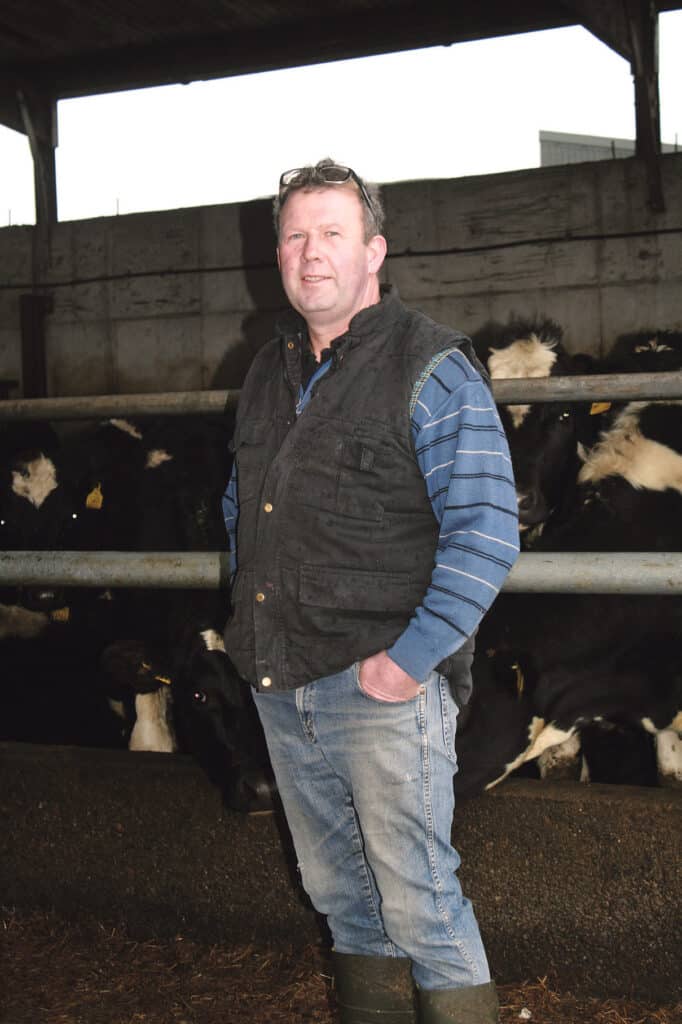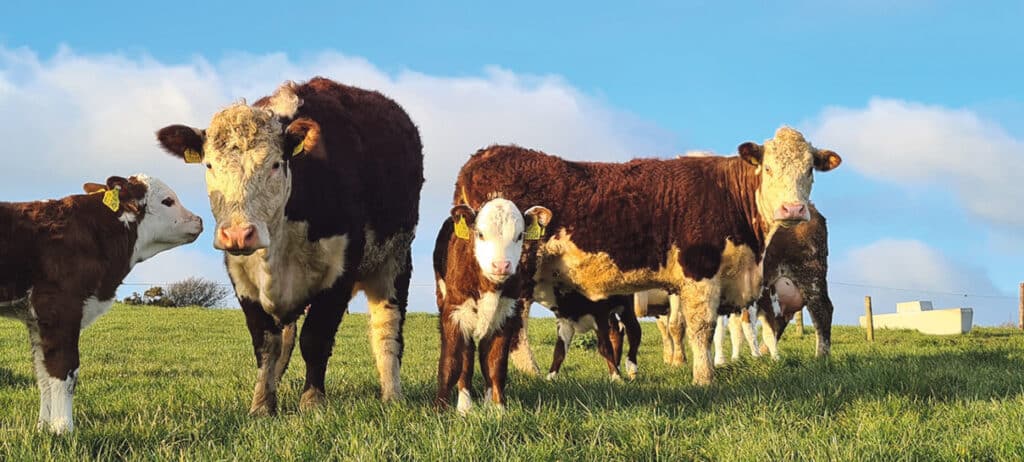With Ireland’s nitrates derogation giving farmers the opportunity to farm at higher stocking rates (above 170 kg livestock manure nitrogen/ha up to 250 nitrogen/ha) once they take extra steps to protect the environment, it’s all about improving environmental imprint for farmers such as Ballinascarthy’s Vivian Buttimer. With ‘nitrates’ the key word in achieving this aim, farmers like Vivian are doing everything in their power to farm sustainably in order to meet nitrates derogation requirements. He chats to Mary O’Brien.

The Buttimer family dairy farm is located on the historic Ford homestead at Crohane in Ballinascarthy where the land has been farmed for over 300 hundred years. It’s officially known as the ‘Ford Farm’. Henry Ford’s father William and his great great grandfather were all born there. “My father married into the last generation of Fords,” explains Vivian, who is married to Jocelyn and has three children, Lisa, Evan and Kelsie. Evan studied Agriculture at UCD and is now running the farm with his father and Kelsie is currently studying at Darrara Agricultural College.
With 170 high-yielding dairy cows on the 200-acre farm and a second farm with cattle being raised for beef located in Carrigaline, Vivian and his son Evan have little time for anything else other than farming, especially since calving started in January.
It’s this love of the land however that makes farming a lifestyle choice and not just a job, something that’s very evident when Vivian speaks about his animals. The pet Collie follows him protectively around the yard, cats appear at his legs as he chats, cattle are housed with rubber mats instead of concrete protecting them from cold and lameness and even the visiting yellowhammer birds have been allocated a safe roosting place in one of the sheds. He shares his fondness for a 14-year-old cow, the oldest resident on the farm.
Vivian is also very aware of the importance of vaccination and limiting antibiotic use in his cattle, particularly for pneumonia, which after scour, continues to be the second biggest cause of calf mortality on Irish farms. All calves on the Ford Farm have been vaccinated against pneumonia.
Housing and ventilation also have an important role to play in disease prevention so Vivian is adding on additional housing to ensure all his animals are adequately sheltered and have the comfort and space needed to help them thrive.
While no corners are cut on this farm, with 170 calves reared each year needing to be fed little and often, sometimes up to four times a day, systems such as the automated calf feeder do help reduce some of the workload.
And of course protecting the environment is top of the list. “My father and his generation were very aware of the impact of farming on the environment and much more conscious of doing things to alleviate this impact like planting trees and native hedgerows and and using lime on the land.” Lime neutralises the effects of acids from nitrogen fertiliser, slurry and farmyard manure and can improve the overall structure of the soil. “Now we find ourselves in a situation where if we don’t all return to these more traditional methods, our soil and our water quality will be at risk,” says Vivian.
In looking to the past for the good of the future, Vivian also talks about simple measures farmers can take like keeping and protecting bees on farms. “We had bee hives on our farm for years and I’d love to have them back,” he says even though he has developed a life-threatening bee allergy. “All of these native hedgerows we need to plant on our farmland will encourage bees and pollination and help the survival of our plant species,” he emphasises.
Spreading slurry and fertiliser with a dribble bar and having GPS in the tractor has made spreading a lot more efficient. “We’re saving 10-15 per cent of fertiliser by reducing overlapping with the GPS system,” explains Vivian.
“Nutrient management and keeping up production using less chemical fertiliser is a challenge but we’re determined,” he says. “We’re making better use of our livestock manure by spreading it on grassland and we haven’t used phosphorous for the last 20 years. It’s down to mindset. If your ground doesn’t need phosphorous then why would you spread it, especially when you can save money and help protect our environment by not using it.” Solid manures are less of a pollution risk than slurry. While an essential element for animal and plant growth, too much phosphorus contributes to algae blooming in our rivers, lakes and streams though agricultural runoff.
“Working with the environment or for the good of it is an ongoing process and you can’t turn your back on it,” emphasises Vivian, who says he would also love to see the return of barn owls on his land. “The last time I saw one here was 20 years ago and what an impressive creature he was,” he recalls.
Thankfully Ireland’s barn owl population is on the rise after decades of decline so this may be a sight that Vivian will get to see again in years to come.
So many of our farmers, like Vivian, have taken the bull by the horns and are working to solve agri-environmental problems and, as more and more wildlife-friendly habitats are developed on farmland across Ireland and agri-environment schemes are implemented, there is hope that environmental protection and human food security can co-exist in a critical balance.



